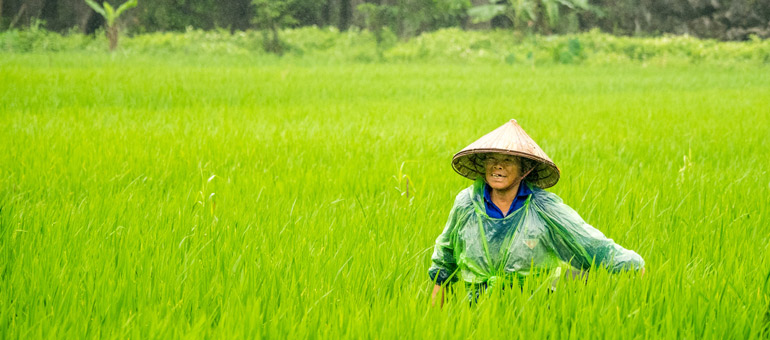Today marks International Women’s Day – an occasion to reflect on the contributions of women worldwide and, for GAIN, to reflect on how we are working to engage and empower women through our work. Over the past decade, there has been growing focus on empowering women in agriculture - and with good reason. Women’s participation in agriculture varies by region, but in many African countries, women make up close to half of the agricultural labour force. Worldwide, women often have lower access to inputs, information, training, capital, and credit. Women’s ownership of land also typically lags far behind that of men. As a result of these barriers and complex gender relations and intrahousehold bargaining, African women farmers are less likely than men to adopt improved crop varieties and management systems, and crop yields on plots managed by women are typically lower than on plots managed by men. In 2011, the FAO estimated that women’s yields could grow by 20 - 30% if the gender gap in accessing agricultural inputs were closed, an increase that could raise agricultural output in low- and middle-income countries by 2.5 - 4%, reducing the global number of food insecure people by 12 -17%.
In addition to these positive effects on system-level food security, empowering women can have more direct positive impacts on the nutrition of their families. There is generally a positive association between women’s empowerment and theirown nutrition and food security and that of their young children. Several studies link maternal decision-making, autonomy, or empowerment in agricultural production to indicators of better child or women’s nutrition. Recently, it was experimentally confirmed that women’s empowerment is a pathway by which a nutrition-sensitive programme could improve children’s nutritional status. Empowering women benefits them, their families, and the overall economy.

Recently, it was experimentally confirmed that women’s empowerment is a pathway by which a nutrition-sensitive programme could improve children’s nutritional status. © GAIN / Unsplash
Recent work on women’s empowerment in agriculture has thus included significant advances in closing data gaps, testing metrics, and developing new approaches to programming, including interesting initiatives such as making agricultural extension more gender-sensitive. Most of this work, however, though, focuses on smallholder agricultural households. There is less evidence on how to empower women within more lucrative commercial, export, and contract farming sectors (within which women are heavily underrepresented) or in the latter stages of the food supply chain, such as processing, distribution, and retail. And even less is known about how supporting women in these areas may improve nutrition and food security.
However, women are active in every stage of the food value chain. In West Africa, for example, the food system accounts for 68% of employed women, who make up 83% and 72% of those employed in food processing and food marketing, respectively. Gender relations are central to the social and economic context that shapes agricultural value chains – from the types of jobs available to men and women, pay gaps, time use, decision-making, and access to labour-saving technology. Gender-related factors can also influence women’s ability to participate in value chains. A recent systematic review enumerated the barriers to women’s economic empowerment in low- and middle-income countries, especially in higher productivity sectors such as commercial agriculture. These included limited social networks; lack of infrastructure, credit, technology, and training; gender norms and gender-based discrimination; and laws restricting women’s access to resources.
Gender relations are also impacted by shifts within markets and agricultural value chains. For example, depending on the context, expanding women’s participation in agricultural value chains can either increase or decrease their access to and control over income. Similarly, changes in men’s roles and earnings can shifts the balance of power within the household and community, with implications for women’s roles.
Empowering women benefits them, their families, and the overall economy.
However, value-chain development and achieving gender equity can be mutually supportive – as long as the gender dynamics shaping the value chain are taken into account. Understanding how to do so is highly relevant for GAIN, as we work through food systems and value chains to make healthier food choices more affordable, available, and desirable - thereby improving nutrition. GAIN has long paid attention to the importance of women in ending malnutrition, and we recently developed a Programmatic Gender Strategy, in order to take better account of gender across our programming. This included a commitment to do more to expand evidence and learning on gender equity within food systems, beyond the farm level.
We look forward to working with stakeholders across the value chain, leveraging high-quality research and surfacing tacit knowledge, to see this goal achieved.